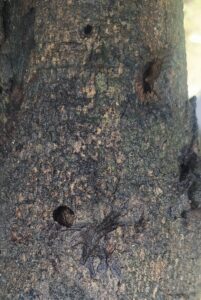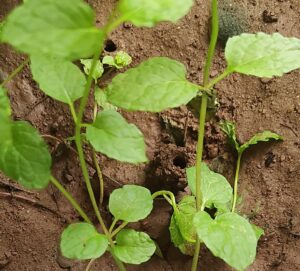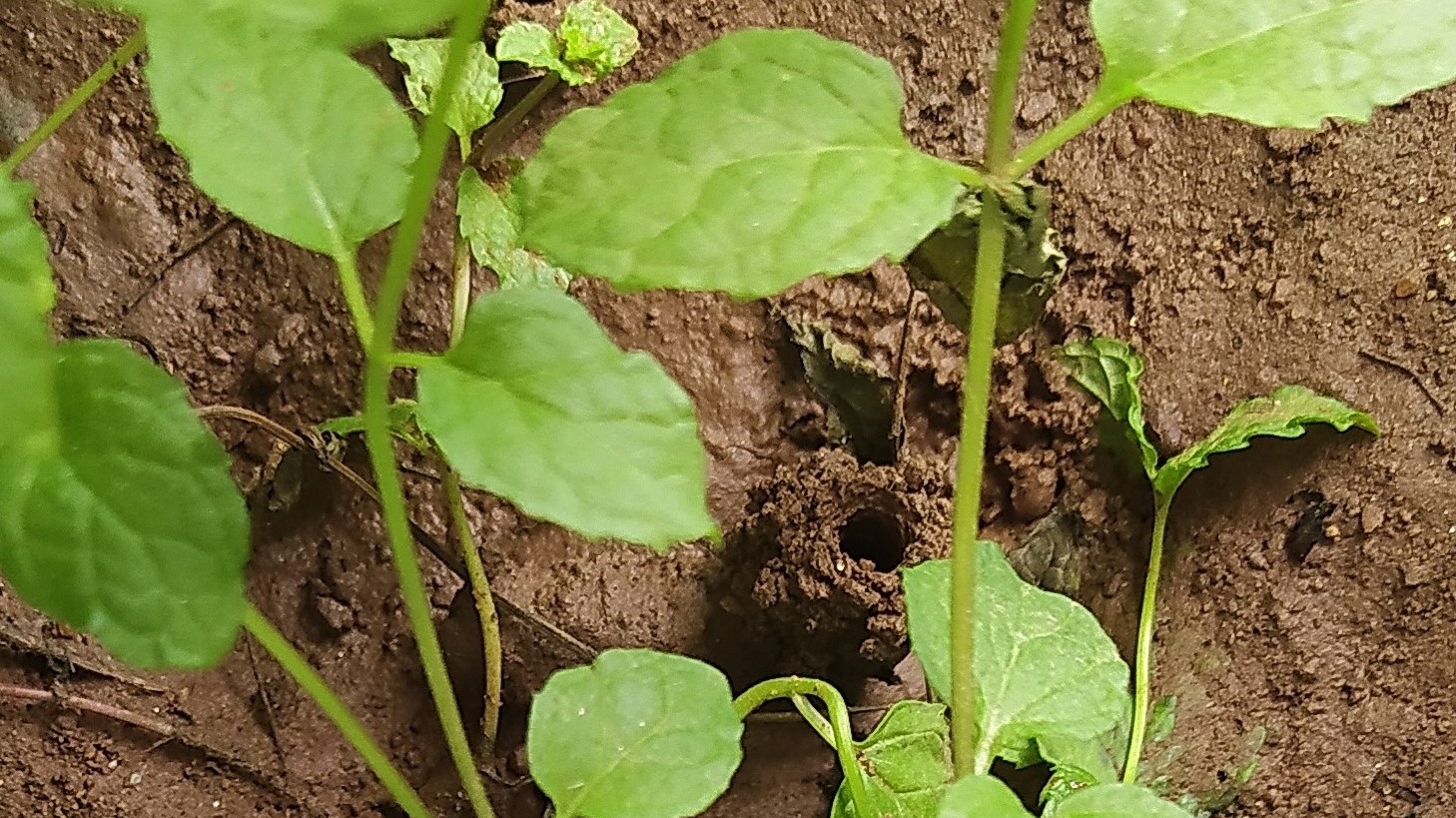Designing on-farm conservation strategies of native bee pollinators:
Restoring the Nesting Habitats
Bees are an important group of pollinators and over 700 bee species are recorded in India. However, the population of many species are decreasing while some are on the verge of extinction. Among several causative factors, changes and loss of habitats are key drivers of decline. While bees require adequate floral resources, the availability of dead wood in field margins, dried crop residues, small cavities in wooden fences and underground burrows are crucial nesting habitats.

Changes in agronomic methods and other cultural practices such as row method of planting, frequent clearing of field margins, absence of crop rotation with diverse species, burning crop residues and dead wood branches etc. are key factors triggering loss of nesting habitats. The Conference of Party 14 to the Convention on Biological Diversity adopted a decision for the conservation of pollinator-friendly habitats at farm and ecosystems level through appropriate actions (article 14.6 (v)).
This blog tries to capture the importance of the native bees in agroecosystems in Kannivadi region, Dindigul district, Tamil Nadu, India. Between June – October 2021the research team recorded a wide diversity of native bees; the most frequent and consistent visitors are Xylocopa sp. Scolia sp. Sphex sp. Megachile sp., Pepsis sp., Halictus sp., Amegilla zonata and A. quadrifasciata. The nesting habits of these native bees are different from the domestic bees such as Apis sp. Native bees and most of the solitary bees are active after emergence for a few hours only, then depending upon the weather condition it is hiding ng in the plant-tunnel nest. Among the native bees, sweat bees are most abundant in Kannivadi and overlapping generation has been recorded in the summer.

The observations from the field have shown that about 30 per cent of the native bee species have constructed their nest inside hollow tunnels of tree branches or wooden logs. These tunnels had soft pithy centres made from twigs, wood, bamboo culms, agave stalks and other comparable materials available within the field and field boundaries. The tunnels may be excavated by wood-boring beetle larvae or carpenter bees while, 70 percent of the native bees (sweat bees, mason bees, digger bees and leafcutter bees) constructed their nest below ground by excavating the wet soil. These ground nesting bees created small narrow tunnels burrowed down to small chambers (brood cells) -the depth of the tunnels varied from 6 – 36 inches. To build their nests, bees need direct access to soil surface with slight slope and good drainage system. Also, it was observed that few native bees select small cavities in and around old rodent burrows and sometimes choose fallen plant materials.
However, the on-going changes in the agronomic and cultural practices pose threats to such habitats; these include burning the dead wood residues in the field margins, replacing wooden fence with barbed wires, land management without leaving unused spaces or fallow land, Insufficient inter cultural operations, monoculture dominant faming, and field margins dominated by invasive species such as Parthenium hysterophorus. All of these contribute to lack of suitable nesting habitats and furthermore farming operations disturb existing habitats of native bees.
Dialogue with the local men and women farmers reveals a significant gap in their knowledge on the habitats of the native bees. Thus, imparting necessary knowledge and simple practices on bees’ habitats will be supportive and motivate them to take informed management decisions. Such knowledge building activities are necessary to translate the relevant clauses/articles on pollinators and habitat restoration in CBD policy of CoP 14 in to action in the field.
Ranjith, and P. Manikandan, MSSRF
[1]https://www.cbd.int/doc/decisions/cop-14/cop-14-dec-06-en.pdf

